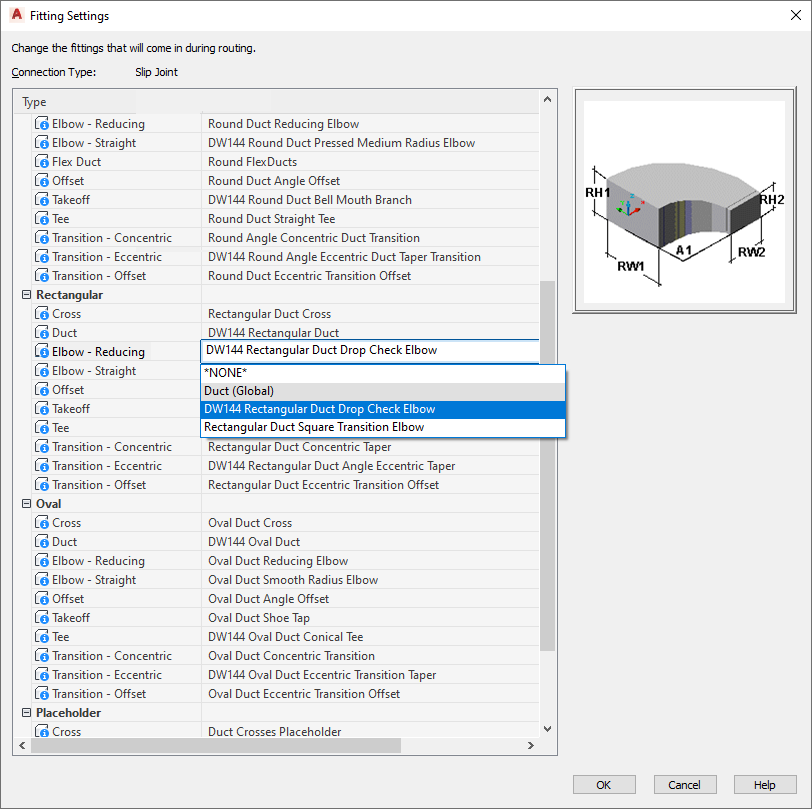You can configure Duct Routing Preferences and system definitions to control the construction, display, and annotation of duct systems. Duct Routing Preferences are applied to all new duct runs. When adding a duct run, you specify a system definition.
- In the Styles Browser palette
 Object Type
Object Type  HVAC Objects
HVAC Objects  Duct Part Routing Preferences
Duct Part Routing Preferences
- Select a duct, in the Properties palette
 Basic
Basic  Dimensions
Dimensions  Routing Preference
Routing Preference  click
click

You use routing preferences to draw accurate duct systems when creating a duct run. Duct routing preferences specify which duct part to insert and these fittings are added automatically as you lay out the duct run. Routing preferences meet design standards and specifications and contain the duct parts and duct fittings.
A duct part routing preference includes one or more size ranges for duct parts and fittings, such as elbows, tees, cross, takeoff, and transitions. The software organizes the size ranges based on nominal duct sizes. You can use duct parts and fittings in a specified size range as you lay out the duct run. The available duct parts are specific to the connection type you select. The following example shows the routing preferences for the connection type Slip Joint baed on shape for the Global profile.

Routing preferences, showing parts organized based on connection type
Multiple size ranges provide more flexibility in your duct designs.
When you configure a routing preference for a particular specification, the appropriate fittings are automatically inserted into the duct layout.
Size Ranges in Routing Preferences
Ducts and fittings in a size range must have common nominal sizes in a routing preference that you can use in a duct run. The following conditions apply to size ranges:
- The lower limit of a size range (shown in Size Upper Limit) is set to the smallest size in common with all the selected parts. However, if you create a size value for a mid-size range that is less than the higher limit of the previous size range, the mid-size range value automatically moves to the previous size range. For example, if you set a value of 3 in size range 2, but that value is less than what is in size range 1, size range 2 becomes size range 1 and size range 1 becomes size range 2.
- The list of available sizes for the upper limit of the size range (Size Upper Limit) is filtered to include only the sizes that are common to all of the selected parts.
- The available range of sizes for the selected part is displayed for the part.
Size range details appear on the Properties palette when you add a duct segment to a duct run. The nominal sizes are grouped based on the size ranges for the selected routing preference.